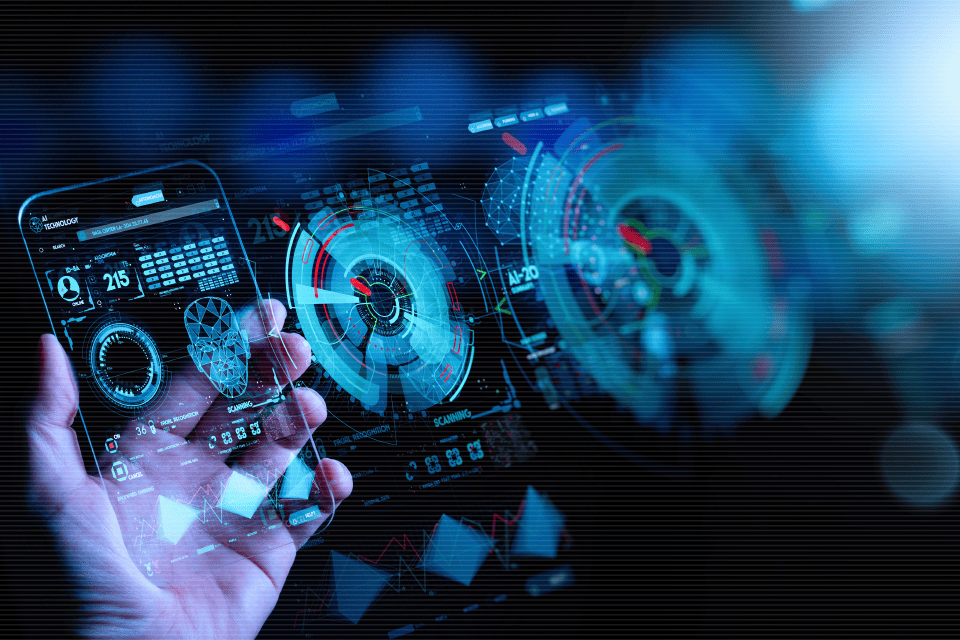Technology has become a vital part of the healthcare landscape, transforming how medical professionals deliver care, diagnose illnesses, and manage patient information. The integration of advanced technologies into healthcare systems is enhancing patient outcomes, improving operational efficiency, and paving the way for innovative treatment methods. In this article, we explore five key ways technology is revolutionizing healthcare.
1. Telemedicine: Breaking Down Barriers to Care
Telemedicine is one of the most significant advancements in healthcare technology. By allowing patients to consult healthcare providers remotely via video calls, phone calls, or chat, telemedicine has made healthcare more accessible than ever before. This is particularly beneficial for patients in rural or underserved areas, where access to healthcare services may be limited.
Benefits of Telemedicine
- Convenience and Accessibility: Patients can schedule appointments from the comfort of their homes, eliminating the need for travel and reducing wait times. This is especially advantageous for those with mobility issues or chronic conditions requiring regular follow-ups.
- Cost-Effectiveness: Telemedicine can reduce healthcare costs for both patients and providers. Patients save on transportation expenses, and healthcare facilities can decrease overhead costs associated with maintaining physical office spaces.
- Expanded Reach: Telemedicine platforms enable healthcare providers to reach a broader patient base, including those in remote locations. This can lead to early diagnosis and treatment, ultimately improving patient outcomes.
- Increased Patient Engagement: By facilitating easy communication with healthcare providers, telemedicine encourages patients to take a more active role in their healthcare, leading to better adherence to treatment plans.
Challenges of Telemedicine
Despite its many advantages, telemedicine also faces challenges, including concerns about data privacy, the need for reliable internet access, and the lack of physical examination during consultations. However, as technology advances and regulations adapt, these obstacles are being addressed, making telemedicine an integral part of modern healthcare.
2. Electronic Health Records (EHRs): Streamlining Patient Information

Electronic Health Records (EHRs) have replaced traditional paper-based records, enabling healthcare providers to access and share patient information quickly and securely. EHR systems offer a centralized repository for patient data, improving coordination and continuity of care.
Advantages of EHRs
- Improved Accuracy and Safety: EHRs minimize the risk of errors associated with handwritten notes and prescriptions. With standardized formats and automatic alerts for potential drug interactions, EHRs enhance patient safety.
- Enhanced Communication: EHRs allow for seamless communication between healthcare providers, ensuring that all members of a patient’s care team have access to the same up-to-date information. This is particularly crucial for patients with complex medical histories requiring coordinated care from multiple specialists.
- Data Analytics: EHRs enable healthcare organizations to analyze patient data for trends and insights. This can lead to improved population health management, identification of at-risk patients, and enhanced disease management programs.
- Patient Empowerment: Many EHR systems include patient portals, allowing patients to access their health records, lab results, and treatment plans. This transparency fosters patient engagement and encourages individuals to take charge of their health.
Challenges of EHRs
While EHRs offer numerous benefits, they also present challenges, including the high costs of implementation and maintenance, concerns about data security, and the need for ongoing training for healthcare staff. However, the potential for improved patient care and operational efficiency makes EHRs a crucial component of modern healthcare systems.
3. Wearable Technology: Monitoring Health in Real Time
Wearable technology, such as smartwatches and fitness trackers, has gained popularity among consumers and healthcare professionals alike. These devices enable users to monitor their health metrics in real time, providing valuable insights into their well-being.
Benefits of Wearable Technology
- Real-Time Monitoring: Wearable devices can track heart rate, sleep patterns, physical activity, and more. This continuous monitoring allows for early detection of potential health issues, enabling timely intervention.
- Personalized Health Management: By collecting data on individual health metrics, wearable technology can help users set personalized health goals and receive tailored recommendations for improving their overall well-being.
- Remote Patient Monitoring: Healthcare providers can utilize data from wearable devices to monitor patients with chronic conditions remotely. This can reduce the need for frequent in-person visits and enhance patient compliance with treatment plans.
- Encouraging Healthy Behaviors: Wearable technology can motivate users to engage in physical activity, maintain a balanced diet, and manage stress. By providing real-time feedback, these devices encourage healthier lifestyle choices.
Challenges of Wearable Technology
Despite their potential, wearable devices face challenges, including data privacy concerns, the need for accurate and reliable measurements, and the risk of users misinterpreting their health data. However, as technology advances and regulatory frameworks develop, these challenges are being addressed, making wearable technology a promising tool in healthcare.
4. Artificial Intelligence (AI) and Machine Learning: Enhancing Diagnostics and Treatment

Artificial intelligence (AI) and machine learning are transforming the healthcare landscape by improving diagnostics, personalizing treatment, and streamlining administrative processes. These technologies leverage vast amounts of data to identify patterns and make predictions, leading to more accurate diagnoses and targeted therapies.
Advantages of AI and Machine Learning
- Improved Diagnostic Accuracy: AI algorithms can analyze medical images, pathology slides, and genetic data with high precision, assisting healthcare providers in diagnosing conditions such as cancer, heart disease, and neurological disorders more accurately.
- Personalized Treatment Plans: AI can analyze a patient’s genetic makeup, medical history, and lifestyle factors to recommend tailored treatment plans. This approach increases the likelihood of successful outcomes and reduces adverse effects.
- Predictive Analytics: Machine learning can identify patients at risk of developing certain conditions by analyzing data trends. This allows for proactive interventions, potentially preventing serious health issues before they arise.
- Streamlined Administrative Processes: AI can automate administrative tasks such as appointment scheduling, billing, and claims processing, reducing the burden on healthcare staff and improving operational efficiency.
Challenges of AI and Machine Learning
While AI and machine learning hold immense promise for healthcare, they also raise concerns about data privacy, ethical considerations, and the need for transparency in decision-making processes. Ensuring that AI systems are trained on diverse datasets and comply with ethical guidelines is crucial to realizing their full potential in healthcare.
5. Robotics: Transforming Surgery and Rehabilitation

Robotic technology is making significant strides in healthcare, particularly in surgical procedures and rehabilitation. Robotic-assisted surgeries offer numerous advantages, including enhanced precision, reduced recovery times, and improved patient outcomes.
Benefits of Robotics in Healthcare
- Precision and Minimally Invasive Procedures: Robotic surgical systems allow for minimally invasive procedures, which can result in less pain, reduced scarring, and shorter recovery times compared to traditional surgeries. Surgeons can perform intricate procedures with enhanced dexterity and precision.
- Enhanced Surgical Training: Robotic systems often include simulation technologies that allow medical professionals to practice and refine their skills in a controlled environment, improving their proficiency and confidence.
- Robotic Rehabilitation: Robotics is also transforming rehabilitation therapies. Robotic exoskeletons can assist patients with mobility impairments, enabling them to regain independence and improve their quality of life. These devices provide personalized support and feedback, enhancing the rehabilitation process.
- Remote Surgery: Advances in robotic technology are paving the way for remote surgeries, where skilled surgeons can operate on patients from distant locations using robotic systems. This could increase access to specialized care, particularly in underserved areas.
Challenges of Robotics in Healthcare
Despite the many benefits, the integration of robotics in healthcare presents challenges, including high costs of robotic systems, the need for extensive training, and concerns about patient safety during robotic procedures. However, ongoing advancements in robotics and AI are expected to address these challenges, making robotic technology a valuable asset in modern healthcare.
Conclusion
Technology is undeniably revolutionizing healthcare, offering innovative solutions to longstanding challenges in the industry. From telemedicine and electronic health records to wearable technology, AI, and robotics, these advancements are improving patient outcomes, enhancing operational efficiency, and making healthcare more accessible. As technology continues to evolve, it will undoubtedly play an even more significant role in shaping the future of healthcare, ultimately leading to better care and healthier populations. Embracing these changes is crucial for healthcare providers, policymakers, and patients alike as we navigate this transformative landscape.










Leave a Reply